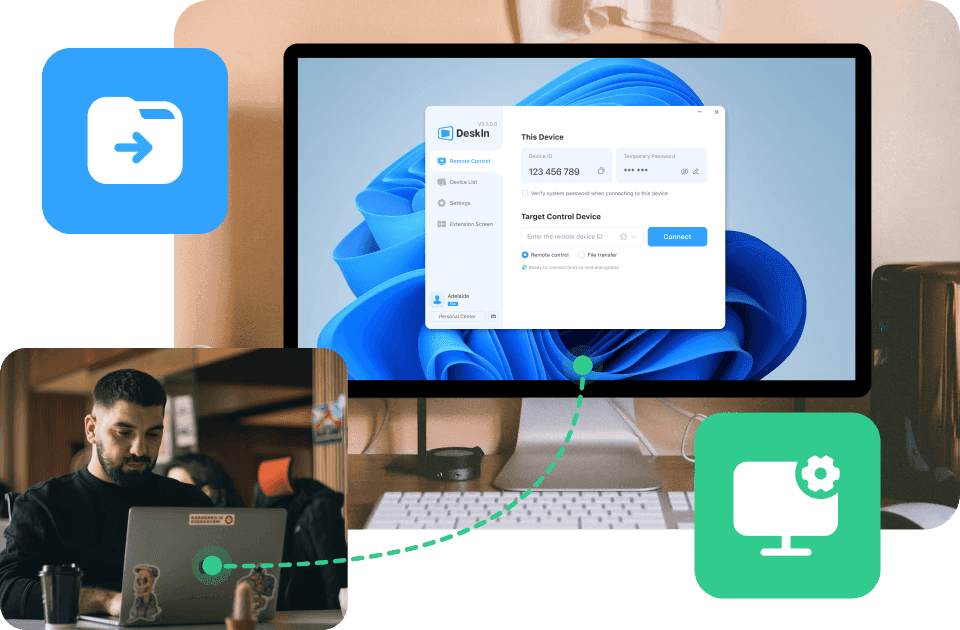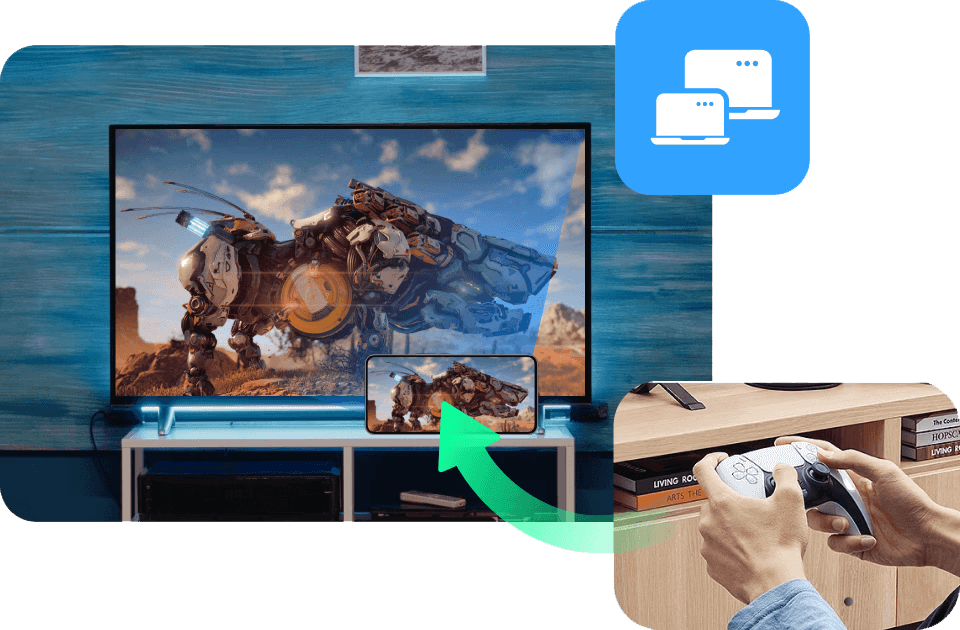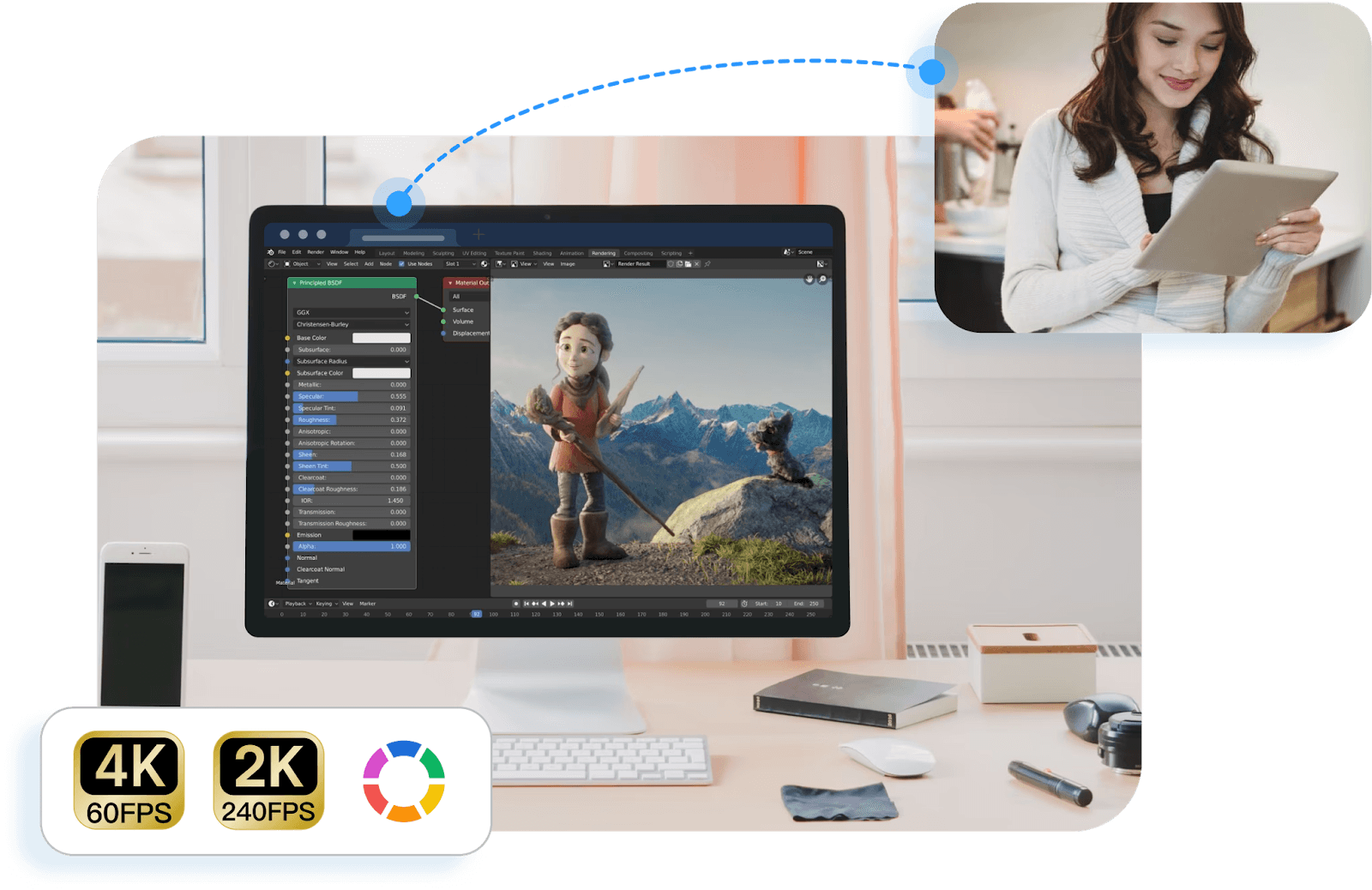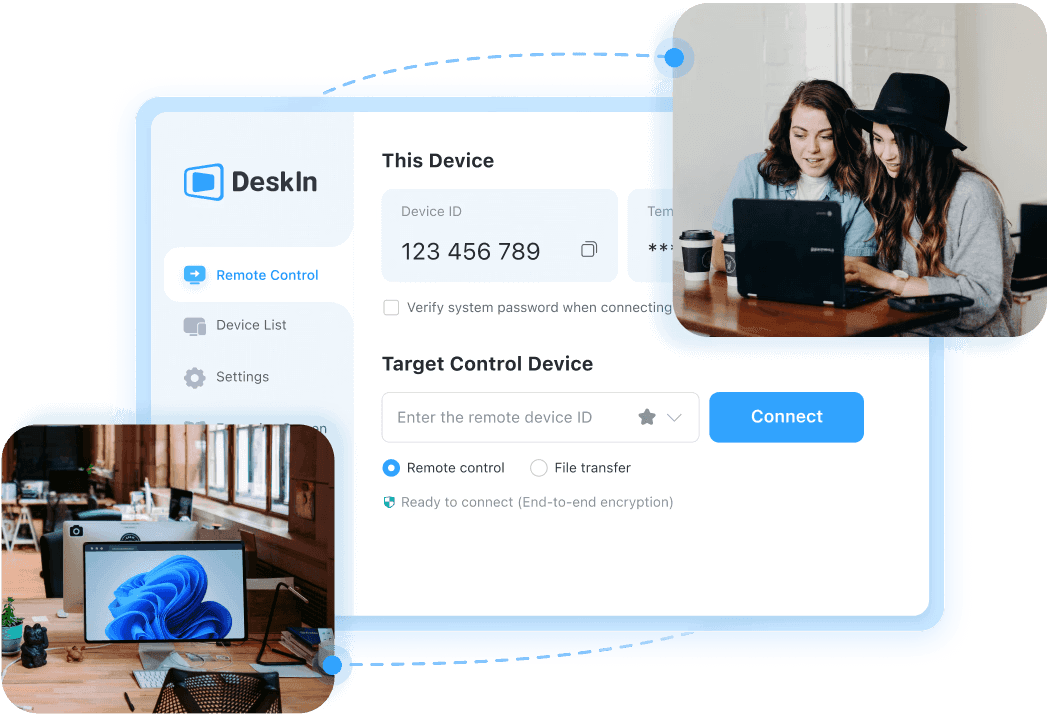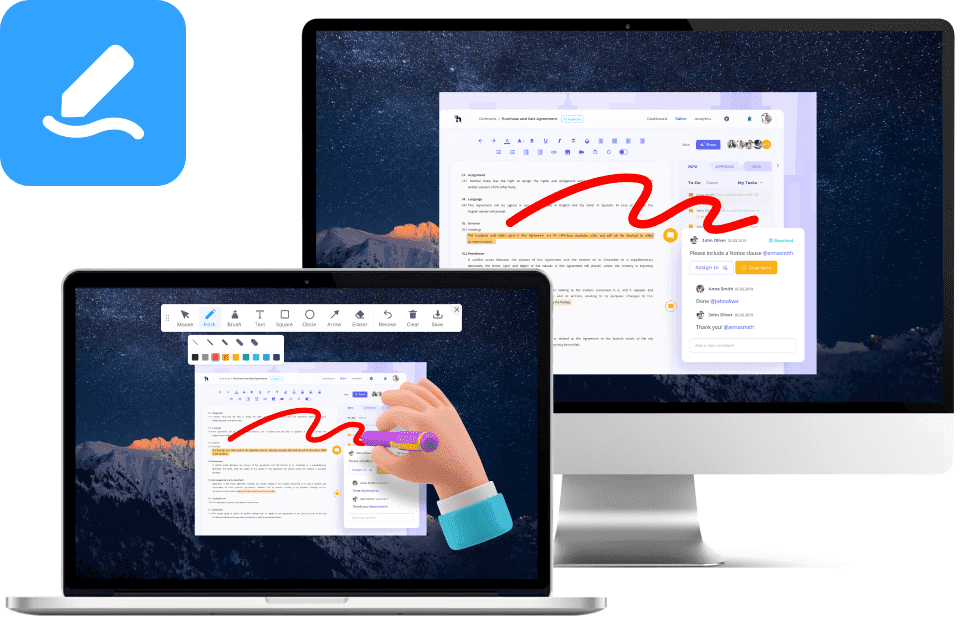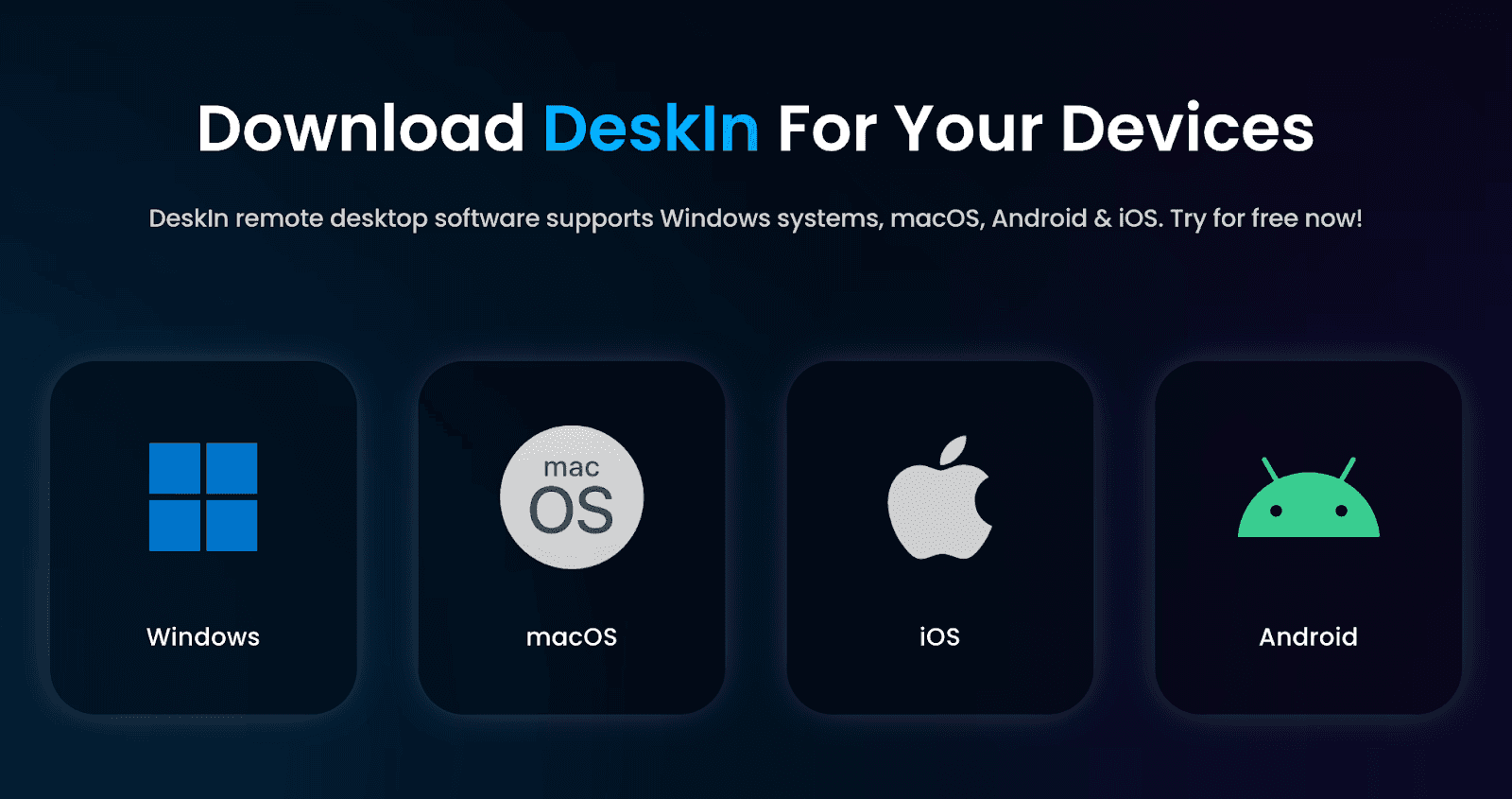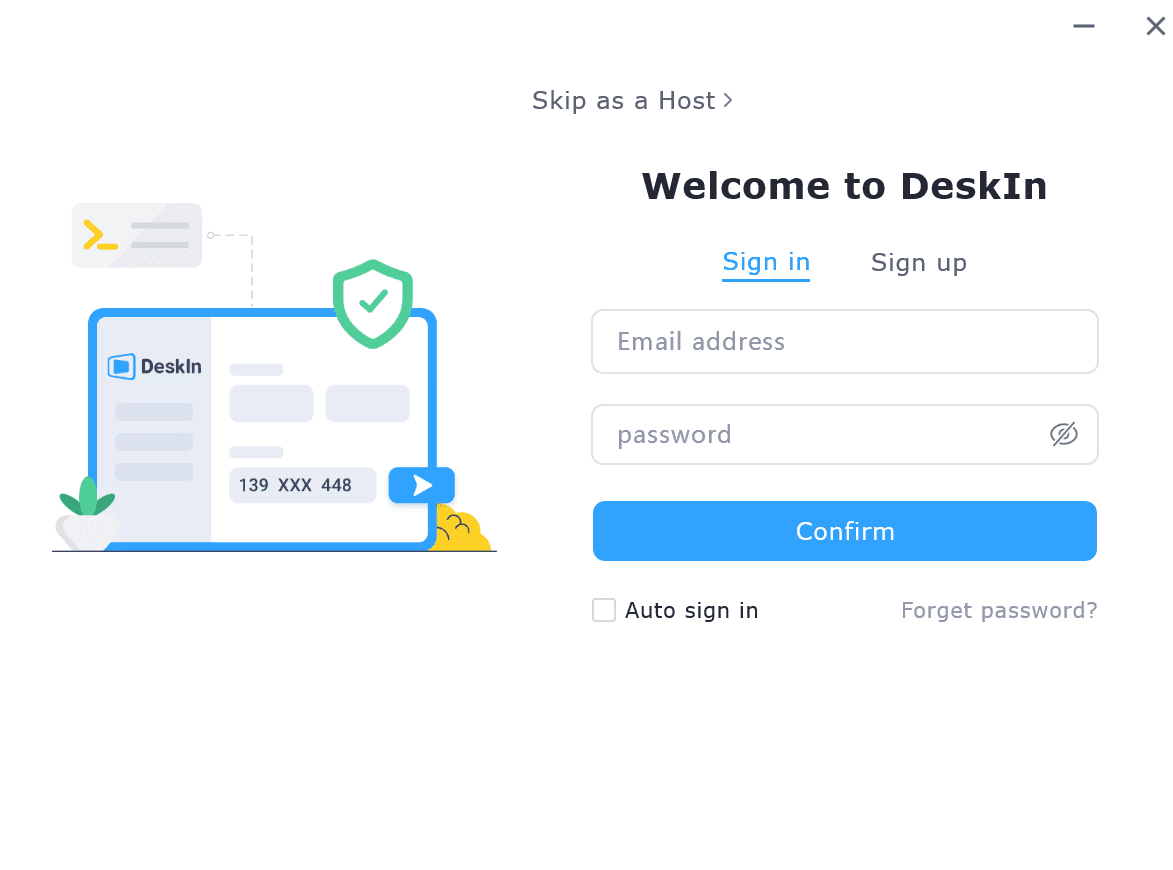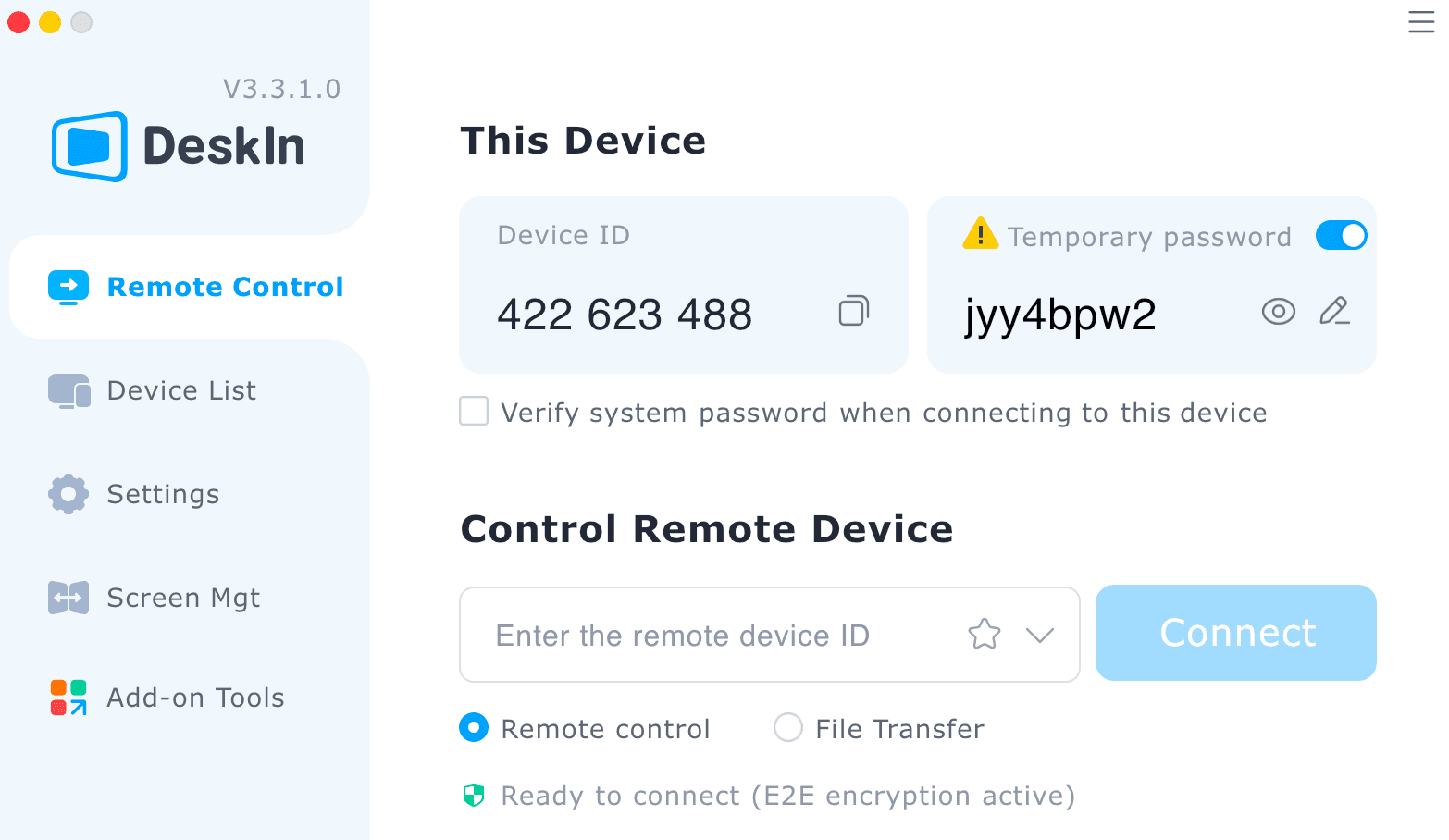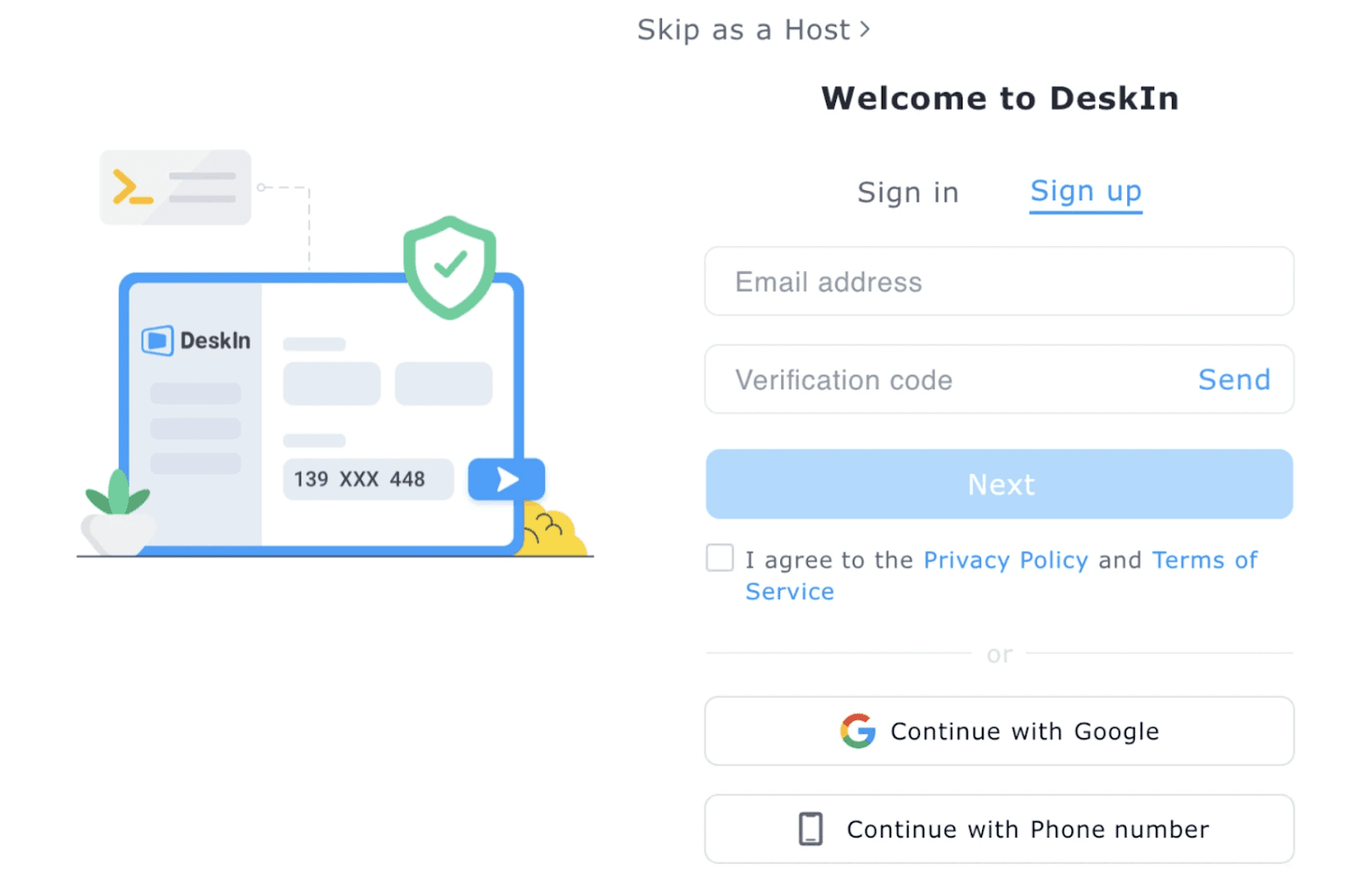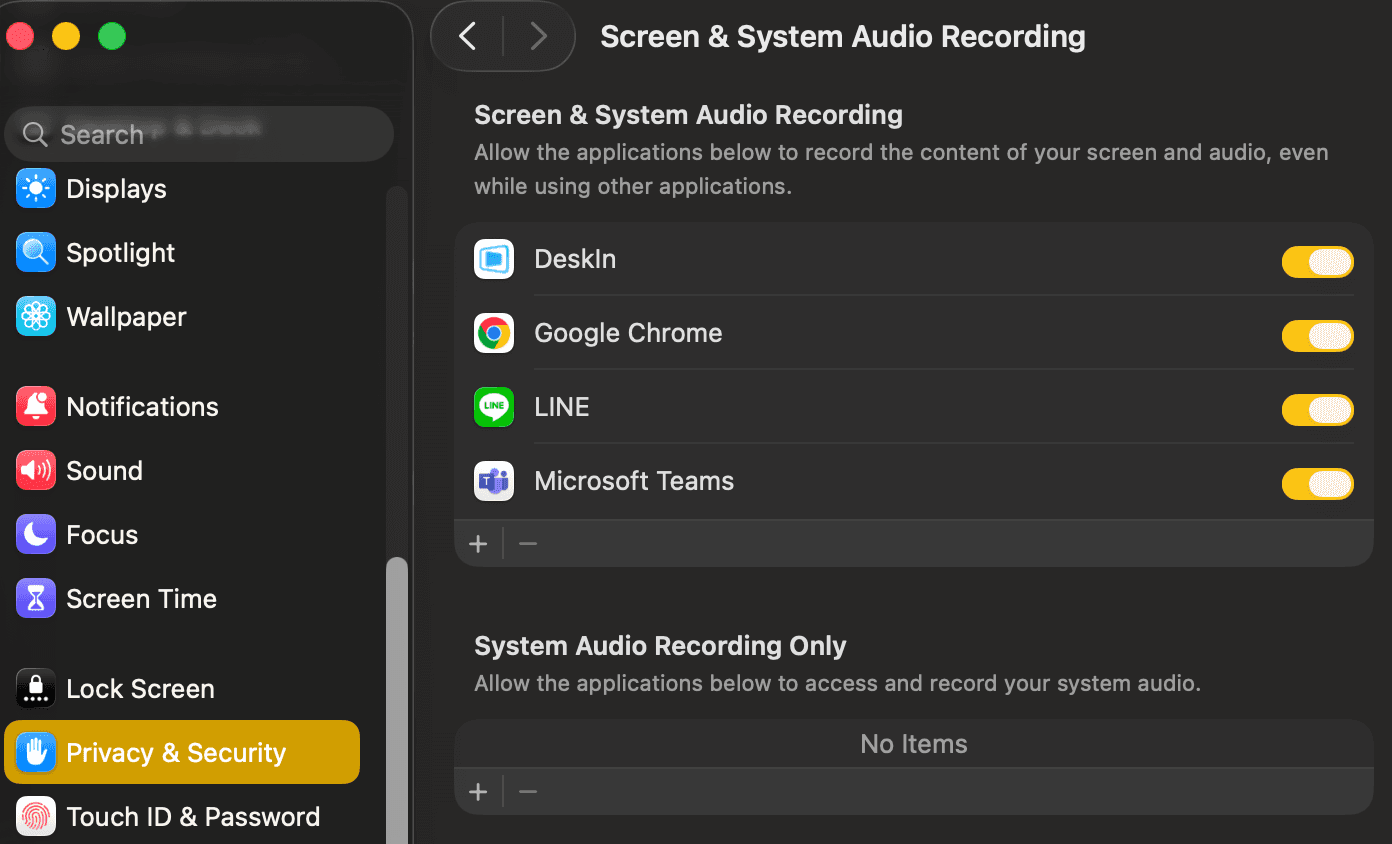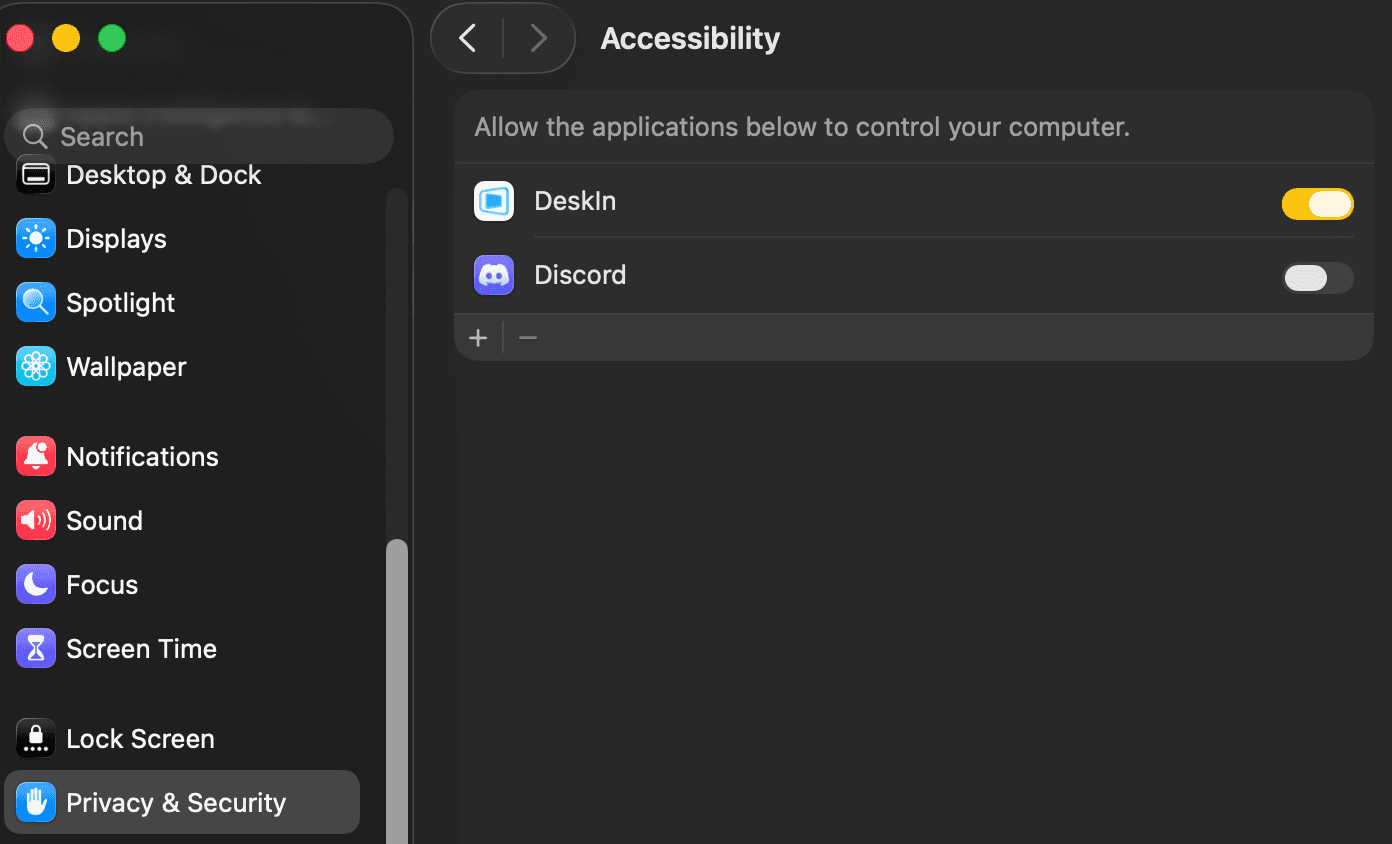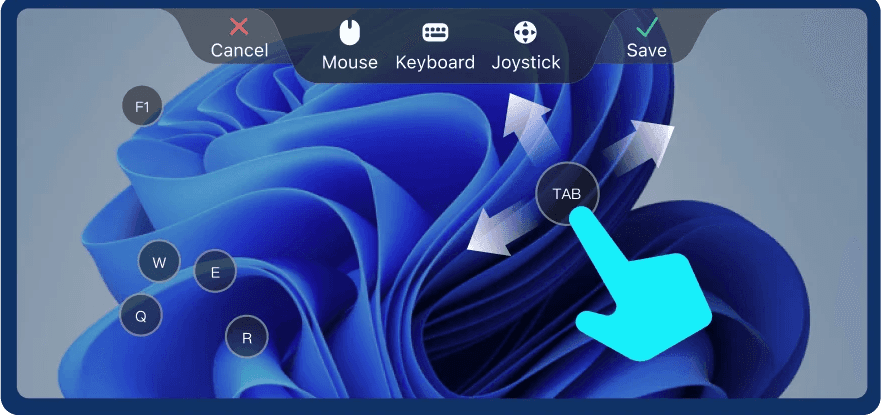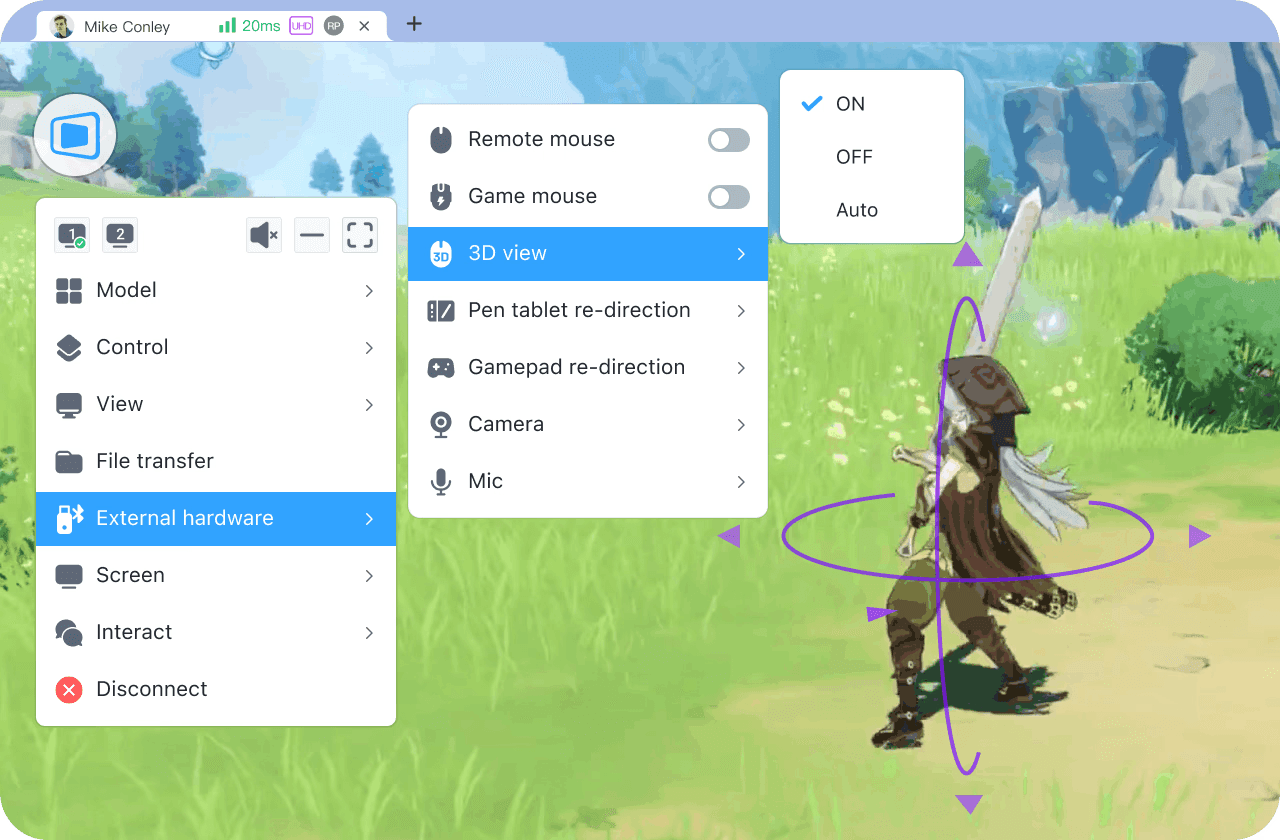友人や家族のコンピューターが突然トラブルに見舞われたとき、遠くにいるために助けられず無力さを感じたことはありませんか?心配無用です — Microsoftが搭載している「クイック アシスト」がまさにそのために設計されています。この無料のリモートサポートツールを使えば、シンプルなセキュリティコードを使用して他の人のWindowsコンピューターを即座に閲覧したり制御したりすることができます。まるでその場にいるかのようにです。
このガイドでは、この便利なツールの全体像からコア機能、実用的なチュートリアルまで、完全に解説します。
また、クイックアシストの効果的な使い方、Macユーザーやより高度な機能が必要な人向けのベストな代替案についても深掘りし、接続に関する一般的な問題への実用的なトラブルシューティングのヒントを共有します。リモートでより効率的にコラボレーションする方法を見つけるために読み進めてください。
さらに読むべき記事:
クイック アシストとは: そのコア機能を理解しよう

「クイック アシスト」は、Windowsユーザー向けに無料で提供されている組み込みのリモートサポートツールです。追加ソフトウェアをインストールしたり有料の契約をする必要はありません — 両者共にWindowsを使用していれば、簡単な一回限りのセキュリティコードで安全に画面を共有したり、フルリモート操作を許可したりできます。OSに完全に統合されているクイック アシストは、技術サポートを迅速、簡単、かつ効率的に行うことができ、特に一時的なPCの問題を解決するのに理想的です。
クイック アシストの利点
この小さな組み込みの「Windows ヘルパー」を侮ってはいけません。以下の4つの主要な利点のおかげで、クイック、短期のリモートサポートには欠かせない選択肢となっています:
完全無料: 追加費用や隠れたコストはありません。
インストール不要: Windowsに既に組み込まれており、スタートメニューからすぐに起動できます。
非常に簡単に使える: シンプルなインターフェースで、初心者にも優しいです。
安全な接続: Microsoftアカウントの認証と一回限りのセキュリティコードを使用して、セキュアなアクセスを保証します。
クイック アシストの限界
もちろん、クイック アシストに完璧な点はありません。その設計上、クロスプラットフォームのコラボレーションが難しく、Macユーザーにはまったく対応できないため、今日の多デバイス環境では大きな欠点となります。
以下がその主な限界です:
使用事例の制限: 基本的な技術サポートのためだけに設計されており、リモートワーク、ゲーム、クリエイティブデザイン作業はサポートしていません。
macOSのサポートなし: Macユーザーはコードを生成して他者を助けることも、Windowsに接続するためにコードを使用することもできません — クロスプラットフォームサポートには大きな不便です。
ファイル転送なし: セッション中に直接ファイルを共有または交換することはできません — メッセージングアプリやクラウドサービスに頼る必要があります。迅速な双方向ファイル転送が必要な場合、クイック アシストの最良の代替案はDeskInです。
時間制限のあるペアリングコード: 各セキュリティコードは短時間で期限切れになり、初心者には再接続が面倒かもしれません。
無人のアクセスなし: 各セッションにはリモートユーザーからの手動承認が必要で、無人デバイスには接続できません。
💡 ヒント: これらの制限がクイック アシストを使えなくしている場合は、「クイック アシストのベストな代替案」セクションに進んでください。
クイック アシストのダウンロードと使用方法
クイック アシストはWindows 10およびWindows 11のネイティブツールなので、通常はダウンロードする必要はありません。しかし、万が一欠けている場合は、Microsoft ストアから手動インストールが可能です。
ここにWindowsでクイック アシストを使用する方法があります:
ステップ 1: ヘルパーが「クイック アシスト」を開き、「他の人を支援」をクリックし、Microsoftアカウントでサインインします。
ステップ 2: システムが6桁のセキュリティコードを生成し、このコードを助けが必要な人と共有します。
ステップ 3: 受信者が「クイック アシスト」を開き、「補助を受ける」フィールドにコードを入力します。
ステップ 4: 受信者が「画面を共有」を選択して、ヘルパーがデスクトップを閲覧できるようにします。
ステップ 5: 受信者が「許可」をクリックした後、ヘルパーは「リクエスト制御」をクリックしてリモート操作を行うことができます。
ステップ 6: どちら側も「共有停止」をクリックして、いつでもセッションを終了できます。
ベスト クイック アシスト代替案: シームレスなWindows–Mac接続

DeskInは強力なリモートデスクトップソリューションであり、クイック アシストの優れた代替案です — 特にクロスプラットフォームの互換性で知られています。Windows、macOS、Android、iOSを問わず、DeskInを利用すれば安全かつスムーズにデバイスを接続・制御できます。
📥 試してみたいですか?DeskInは、安全で信頼性のある使用のために企業グレードの暗号化を備えた無料版を提供しています!

DeskInの主な利点:
強力な互換性: WindowsとmacOSだけでなく、AndroidとiOSでもシームレスに動作します。
高速ファイル転送: 無制限のファイルタイプとサイズに対応し、最大12MB/sの速度でスムーズなワークフローを実現します。
柔軟な接続オプション: 一時的なコード、事前設定されたパスワード、無人アクセスを用いて接続できます。リモート起動のためのWake-on-LANもサポートしています。
豊富なコラボレーションツール: スクリーンの拡張、画面ミラーリング、ボイスチャット、注釈、クリップボード共有などの機能を含んでいます。
使いやすい: 両方のデバイスにDeskInをインストールし、同じアカウントにログインし、ターゲットデバイスのIDとパスワードを使用して接続するだけです。
DeskInでコンピューター2台を接続する方法
ステップ 1: 公式ウェブサイトからDeskInをダウンロードし、両方のコンピューターにインストールします。同じDeskInアカウントでログインしてください。
ステップ 2: Windowsクライアントでデバイスリストから他のデバイスを見つけ、それをクリックし、セキュリティパスワードまたは一時コードを入力すれば、接続完了です。
📥 今すぐ試してみてください — DeskInを使ってすぐに接続しましょう!

クイック アシストが開かない時の対処法
「クイック アシストが開かない」、「フリーズする」、「クラッシュする」場合でも、パニックにならないでください。このトラブルシューティング手順を試してください:
ステップ 1: Microsoft Storeのキャッシュをリセットする。
Windows + Rを押し、wsreset.exeと入力してEnterを押します。約10秒待つと、リセットされてMicrosoft Storeが再度開かれます。
ステップ 2: Windowsアップデートを確認する。
設定 > 更新とセキュリティ > Windows Updateに移動し、保留中のすべての更新をインストールします。
ステップ 3: Microsoft Edge WebView2をインストールまたは修復する。
クイック アシストはこのコンポーネントに依存しています。Windows 11ユーザーはすでに内蔵されていますが、Windows 10ユーザーはMicrosoftのウェブサイトから手動でインストールする必要があるかもしれません。
ステップ 4: PowerShellからクイック アシストを再インストールする。
PowerShellを管理者として実行し、以下のコマンドを入力します:
ステップ 5: システムファイルチェックを実行する。

管理者としてコマンドプロンプトを開き、sfc /scannowと入力し、Enterを押してシステムファイルを修復します。
ステップ 6: 新しいローカルユーザーアカウントを作成する。
問題が解決しない場合は、新しいWindowsアカウントを作成し、そこでクイック アシストを起動してみてください。
これらの方法が全て効かない場合は、先ほど紹介したようなより安定したリモートサポートツールであるDeskInへの切り替えを検討してください。
まとめると、クイック アシストは、Windows内での同一プラットフォームでの迅速で無料のリモートサポートに便利なソリューションです。しかし、macOSのサポートがないため、柔軟性に欠ける一面があります。
異なるシステム(macOSのような)間の接続が頻繁に必要な場合や、ファイル転送や無人アクセスといった高度な機能が求められる場合、DeskInのようなより強力なツールを使用することで、よりスムーズでプロフェッショナルなリモートコラボレーションが可能となります。
📥 DeskInを無料で試し、強力で高速なリモートアクセスを体験してください!

クイック アシスト FAQ
クイック アシストのセキュリティコードが期限切れになった場合、どうすればいいですか?
クイック アシスト内で新しい6桁のコードを生成し、再度共有してください。各コードはセキュリティ上の理由から約10分で期限切れになります。
クイック アシストをアンインストールしても大丈夫ですか?
はい。クイック アシストのアンインストールは、Windowsシステムの安定性に影響を与えません。ただし、システムまたはポリシー上必要である場合を除き、一般的には推奨されません。
受信者はいつでもリモートセッションを終了できますか?
はい。支援を受ける側の人がいつでも共有を停止したり、クイック アシストを閉じることができ、セッションが即座に終了されます — フルコントロールは常に彼らの手にあります。
他にどのようなソフトウェアでコンピューターをリモート制御できますか?
一般的なリモートデスクトップツールには、TeamViewer、AnyDesk、Chrome Remote Desktopがあります。よりスムーズなパフォーマンスとクロスプラットフォームのファイル転送のような高度な機能を必要とするユーザーには、DeskInがプロ向けの素晴らしい「スイスアーミーナイフ」的なソリューションです。
海外ではどのリモートデスクトップツールが使用されていますか?
世界的には、TeamViewerとAnyDeskが最も認識されています。しかし、シームレスなWindows–Mac接続を必要とする人には、DeskInが優れたパフォーマンスを提供し — ファイル転送が超高速で、4K品質のリモートセッションが可能なため、プロフェッショナルやクリエイティブチームに最適です。
友人や家族のコンピューターが突然トラブルに見舞われたとき、遠くにいるために助けられず無力さを感じたことはありませんか?心配無用です — Microsoftが搭載している「クイック アシスト」がまさにそのために設計されています。この無料のリモートサポートツールを使えば、シンプルなセキュリティコードを使用して他の人のWindowsコンピューターを即座に閲覧したり制御したりすることができます。まるでその場にいるかのようにです。
このガイドでは、この便利なツールの全体像からコア機能、実用的なチュートリアルまで、完全に解説します。
また、クイックアシストの効果的な使い方、Macユーザーやより高度な機能が必要な人向けのベストな代替案についても深掘りし、接続に関する一般的な問題への実用的なトラブルシューティングのヒントを共有します。リモートでより効率的にコラボレーションする方法を見つけるために読み進めてください。
さらに読むべき記事:
クイック アシストとは: そのコア機能を理解しよう

「クイック アシスト」は、Windowsユーザー向けに無料で提供されている組み込みのリモートサポートツールです。追加ソフトウェアをインストールしたり有料の契約をする必要はありません — 両者共にWindowsを使用していれば、簡単な一回限りのセキュリティコードで安全に画面を共有したり、フルリモート操作を許可したりできます。OSに完全に統合されているクイック アシストは、技術サポートを迅速、簡単、かつ効率的に行うことができ、特に一時的なPCの問題を解決するのに理想的です。
クイック アシストの利点
この小さな組み込みの「Windows ヘルパー」を侮ってはいけません。以下の4つの主要な利点のおかげで、クイック、短期のリモートサポートには欠かせない選択肢となっています:
完全無料: 追加費用や隠れたコストはありません。
インストール不要: Windowsに既に組み込まれており、スタートメニューからすぐに起動できます。
非常に簡単に使える: シンプルなインターフェースで、初心者にも優しいです。
安全な接続: Microsoftアカウントの認証と一回限りのセキュリティコードを使用して、セキュアなアクセスを保証します。
クイック アシストの限界
もちろん、クイック アシストに完璧な点はありません。その設計上、クロスプラットフォームのコラボレーションが難しく、Macユーザーにはまったく対応できないため、今日の多デバイス環境では大きな欠点となります。
以下がその主な限界です:
使用事例の制限: 基本的な技術サポートのためだけに設計されており、リモートワーク、ゲーム、クリエイティブデザイン作業はサポートしていません。
macOSのサポートなし: Macユーザーはコードを生成して他者を助けることも、Windowsに接続するためにコードを使用することもできません — クロスプラットフォームサポートには大きな不便です。
ファイル転送なし: セッション中に直接ファイルを共有または交換することはできません — メッセージングアプリやクラウドサービスに頼る必要があります。迅速な双方向ファイル転送が必要な場合、クイック アシストの最良の代替案はDeskInです。
時間制限のあるペアリングコード: 各セキュリティコードは短時間で期限切れになり、初心者には再接続が面倒かもしれません。
無人のアクセスなし: 各セッションにはリモートユーザーからの手動承認が必要で、無人デバイスには接続できません。
💡 ヒント: これらの制限がクイック アシストを使えなくしている場合は、「クイック アシストのベストな代替案」セクションに進んでください。
クイック アシストのダウンロードと使用方法
クイック アシストはWindows 10およびWindows 11のネイティブツールなので、通常はダウンロードする必要はありません。しかし、万が一欠けている場合は、Microsoft ストアから手動インストールが可能です。
ここにWindowsでクイック アシストを使用する方法があります:
ステップ 1: ヘルパーが「クイック アシスト」を開き、「他の人を支援」をクリックし、Microsoftアカウントでサインインします。
ステップ 2: システムが6桁のセキュリティコードを生成し、このコードを助けが必要な人と共有します。
ステップ 3: 受信者が「クイック アシスト」を開き、「補助を受ける」フィールドにコードを入力します。
ステップ 4: 受信者が「画面を共有」を選択して、ヘルパーがデスクトップを閲覧できるようにします。
ステップ 5: 受信者が「許可」をクリックした後、ヘルパーは「リクエスト制御」をクリックしてリモート操作を行うことができます。
ステップ 6: どちら側も「共有停止」をクリックして、いつでもセッションを終了できます。
ベスト クイック アシスト代替案: シームレスなWindows–Mac接続

DeskInは強力なリモートデスクトップソリューションであり、クイック アシストの優れた代替案です — 特にクロスプラットフォームの互換性で知られています。Windows、macOS、Android、iOSを問わず、DeskInを利用すれば安全かつスムーズにデバイスを接続・制御できます。
📥 試してみたいですか?DeskInは、安全で信頼性のある使用のために企業グレードの暗号化を備えた無料版を提供しています!

DeskInの主な利点:
強力な互換性: WindowsとmacOSだけでなく、AndroidとiOSでもシームレスに動作します。
高速ファイル転送: 無制限のファイルタイプとサイズに対応し、最大12MB/sの速度でスムーズなワークフローを実現します。
柔軟な接続オプション: 一時的なコード、事前設定されたパスワード、無人アクセスを用いて接続できます。リモート起動のためのWake-on-LANもサポートしています。
豊富なコラボレーションツール: スクリーンの拡張、画面ミラーリング、ボイスチャット、注釈、クリップボード共有などの機能を含んでいます。
使いやすい: 両方のデバイスにDeskInをインストールし、同じアカウントにログインし、ターゲットデバイスのIDとパスワードを使用して接続するだけです。
DeskInでコンピューター2台を接続する方法
ステップ 1: 公式ウェブサイトからDeskInをダウンロードし、両方のコンピューターにインストールします。同じDeskInアカウントでログインしてください。
ステップ 2: Windowsクライアントでデバイスリストから他のデバイスを見つけ、それをクリックし、セキュリティパスワードまたは一時コードを入力すれば、接続完了です。
📥 今すぐ試してみてください — DeskInを使ってすぐに接続しましょう!

クイック アシストが開かない時の対処法
「クイック アシストが開かない」、「フリーズする」、「クラッシュする」場合でも、パニックにならないでください。このトラブルシューティング手順を試してください:
ステップ 1: Microsoft Storeのキャッシュをリセットする。
Windows + Rを押し、wsreset.exeと入力してEnterを押します。約10秒待つと、リセットされてMicrosoft Storeが再度開かれます。
ステップ 2: Windowsアップデートを確認する。
設定 > 更新とセキュリティ > Windows Updateに移動し、保留中のすべての更新をインストールします。
ステップ 3: Microsoft Edge WebView2をインストールまたは修復する。
クイック アシストはこのコンポーネントに依存しています。Windows 11ユーザーはすでに内蔵されていますが、Windows 10ユーザーはMicrosoftのウェブサイトから手動でインストールする必要があるかもしれません。
ステップ 4: PowerShellからクイック アシストを再インストールする。
PowerShellを管理者として実行し、以下のコマンドを入力します:
ステップ 5: システムファイルチェックを実行する。

管理者としてコマンドプロンプトを開き、sfc /scannowと入力し、Enterを押してシステムファイルを修復します。
ステップ 6: 新しいローカルユーザーアカウントを作成する。
問題が解決しない場合は、新しいWindowsアカウントを作成し、そこでクイック アシストを起動してみてください。
これらの方法が全て効かない場合は、先ほど紹介したようなより安定したリモートサポートツールであるDeskInへの切り替えを検討してください。
まとめると、クイック アシストは、Windows内での同一プラットフォームでの迅速で無料のリモートサポートに便利なソリューションです。しかし、macOSのサポートがないため、柔軟性に欠ける一面があります。
異なるシステム(macOSのような)間の接続が頻繁に必要な場合や、ファイル転送や無人アクセスといった高度な機能が求められる場合、DeskInのようなより強力なツールを使用することで、よりスムーズでプロフェッショナルなリモートコラボレーションが可能となります。
📥 DeskInを無料で試し、強力で高速なリモートアクセスを体験してください!

クイック アシスト FAQ
クイック アシストのセキュリティコードが期限切れになった場合、どうすればいいですか?
クイック アシスト内で新しい6桁のコードを生成し、再度共有してください。各コードはセキュリティ上の理由から約10分で期限切れになります。
クイック アシストをアンインストールしても大丈夫ですか?
はい。クイック アシストのアンインストールは、Windowsシステムの安定性に影響を与えません。ただし、システムまたはポリシー上必要である場合を除き、一般的には推奨されません。
受信者はいつでもリモートセッションを終了できますか?
はい。支援を受ける側の人がいつでも共有を停止したり、クイック アシストを閉じることができ、セッションが即座に終了されます — フルコントロールは常に彼らの手にあります。
他にどのようなソフトウェアでコンピューターをリモート制御できますか?
一般的なリモートデスクトップツールには、TeamViewer、AnyDesk、Chrome Remote Desktopがあります。よりスムーズなパフォーマンスとクロスプラットフォームのファイル転送のような高度な機能を必要とするユーザーには、DeskInがプロ向けの素晴らしい「スイスアーミーナイフ」的なソリューションです。
海外ではどのリモートデスクトップツールが使用されていますか?
世界的には、TeamViewerとAnyDeskが最も認識されています。しかし、シームレスなWindows–Mac接続を必要とする人には、DeskInが優れたパフォーマンスを提供し — ファイル転送が超高速で、4K品質のリモートセッションが可能なため、プロフェッショナルやクリエイティブチームに最適です。







